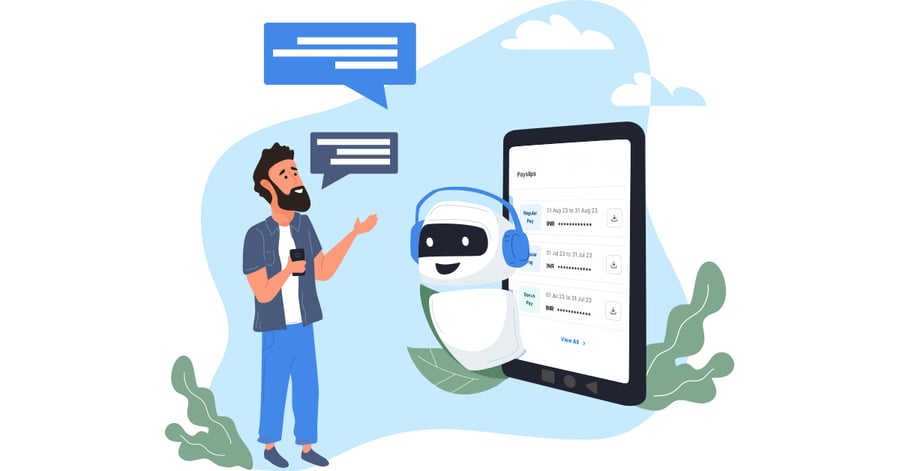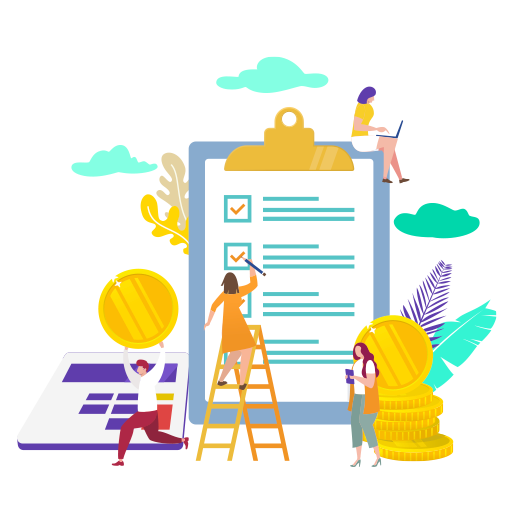
- Home
- Global Payroll
- The Future of Payslips: Real-Time, Transparent, and Interactive
The Future of Payslips: Real-Time, Transparent, and Interactive
The Future of Payslips: Real-Time, Transparent, and Interactive
9:44
Published :

Let me ask you something: when was the last time you actually looked at your payslip?
If you're like most people, the answer is probably “never.” And honestly, I don't blame you. For decades, the payslip has been stuck in a time warp. It’s a static PDF that shows up at the end of the pay period and tells you what you already know (you received the money). Even digital payslips are often just copies of the paper version with some interactive charts. They’re designed for compliance, not clarity, satisfying auditors and regulators but not employees.
But the future of payslips demands more. In a world where we expect real-time feedback, personalized insights, and transparency from everyday tools, the traditional payslip falls flat. If we’re still delivering the same experience in 2030, we’ve failed our employees and missed the chance to transform payroll into a key driver of engagement and retention.
Let’s face it: the current payslip model is reactive, opaque, and detached from daily work. It arrives too late to change anything. It shows you numbers, but not their meaning. Employees might glance at it to make sure their salary looks about right, but most don’t even bother.
The problem? It’s a missed opportunity. You can see the consequences of this when you read employee surveys and exit interviews. Employees are confused about their total compensation, frustrated with lack of pay transparency, and don’t believe their pay is in line with market rates. These issues contribute to turnover, reduce employee engagement, and create unnecessary burdens for HR and payroll teams.
At the same time, compensation is getting more complex.
Employers offer bonuses, benefits, equity, recognition programs, flexible work allowances, and none of these fit neatly into a box labeled “net pay.” Employees need more than a monthly receipt—they need a dynamic tool that helps them make sense of what they earn, what it means in total rewards, and how it can support their life goals. This shift is at the heart of the future of payslips.
By 2030, the payslip won’t be a PDF or something available only in the HR portal. The future of payslips is a real-time, interactive dashboard integrated into the digital work environment. It will live where employees already are—inside Slack, Teams, mobile apps, or other non-HR platforms. And it must do far more than summarize the last paycheck.
As earnings accumulate through hours worked, sales made, or goals achieved, employees will see the dashboard update in real time. They'll be able to tap into any line item to understand exactly where it came from, with links to approvals, policy references, and tax breakdowns. AI-driven insights will offer personalized highlights like, “You’ve earned 10% more in variable pay this quarter, but it’s a one-off payment” or “Your benefits changes will increase (or decrease) your net pay starting next month.”
It won’t be restricted to the current payslip either. Why not show a projection of annual net income based on prior months so an employee can budget for large expenditures during the year? In that way, the future of payslips becomes a simulation tool. Employees could also model different scenarios: What if I work fewer hours? What happens when I adjust my benefits? When I overachieve on my bonus targets? They will instantly see the financial impact of these decisions. This means the payslip becomes a planning and budgeting assistant, not just a record of transactions.
A major driver of this evolution is the shift toward real-time pay. I know that we’ve been talking about this for years. But it’s happening quickly. As new pay engines gradually replace the incumbents, by 2030 I expect on-demand pay to be standard for hourly workers, with mid-cycle pay previews common for salaried roles. This shift is a key part of the future of payslips, moving payroll from batch processing to an always-on experience.
This requires a shift in payroll architecture. Batch-based processing simply won’t cut it anymore. New payroll solutions use event-driven engines that continuously calculate as data changes flow in from time-tracking systems, HRIS platforms, benefits providers, and finance tools. Payroll will be less about “processing” and more about “always-on” and “connecting.”
The result? Employees will gain better financial insights and control, with fewer payroll surprises and faster resolution of issues. Managers will see a tighter link between performance and rewards. And payroll teams will spend less time troubleshooting.
Employee pay isn’t just about salary.
We are moving toward real-time compensation adjustments based on performance, skill development, and contribution metrics. Organizations are offering performance-based incentives, learning-based bonuses, wellness rewards, equity vesting, and even gamified elements like peer recognition points or digital tokens. Some companies are exploring loyalty systems and reputation scores as part of their total rewards philosophy.
The future of payslips must reflect this broader picture.
It will need to consolidate cash, non-cash, short-term, long-term, tangible, and intangible rewards into one coherent view. Not to overwhelm, but to give people an accurate and empowering understanding of how they’re valued.
Built-in pay transparency will become a core feature of the future of payslips. Employees won’t just see what they earn. They’ll have access to contextual benchmarks, pay ranges for their role, and clear explanations of how their compensation is determined. This level of openness builds trust, reduces pay-related confusion, and supports fairer, more equitable compensation practices. It also gives employees the tools they need to advocate for themselves and make informed career decisions.
When employees can see all this information in one place, it reinforces transparency and trust. It also reinforces the connection between effort and reward, which is an essential part of engagement and retention.
Here's what I've learned after years in this space: nobody understands compensation complexity like payroll professionals do. We know the rules, the risks, and the nuances that others miss. We understand compliance requirements, tax implications, and global variations. That puts us in the best position to design solutions that are both innovative and compliant.
This also means we must evolve our own skill set.
- We'll need to become advocates for the employee experience, not just guardians of compliance.
- We’ll need to start thinking like product managers and work with payroll vendors.
- We’ll need to partner with UX designers to ensure payslips are intuitive, not just accurate.
- We’ll need to bring financial wellbeing into the experience by embedding nudges, guidance, and education.
Payroll is no longer just about getting people paid correctly and on time. It’s about designing a financial experience that helps people feel informed, empowered, and appreciated.
You don’t need to wait until 2030 to begin. You also don’t have to offer the whole experience at once. Instead, break it down in manageable, deliberate steps.
Start with an honest audit:
- How useful is your current payslip?
- Do people download it?
- How many clicks does it take to find it?
- What’s static versus interactive?
- What’s clear versus confusing?
Talk to your employees. Ask what questions they have about their pay. Ask what they’d like to see, what would be helpful, and where they go now for financial insight. Use that input to develop better payslip designs, by starting simple, testing often, and iterating.
Work closely with your payroll vendors to understand their roadmap for payslip innovation. Encourage them to prioritize usability and real-time functionality on their product roadmaps. And explore how pay data can be embedded in the digital tools your employees already use.
Finally, think about financial wellness as a core component of the future of payslips. This is an opportunity to help your people make better financial decisions by embedding education, budgeting tools, tax guidance, and savings recommendations right where they’re already looking at their money.
When you do this right, the new payslip becomes a hub for better money decisions, not just a record of transactions. Your employees will notice.
The payslip is one of the most frequent, personal, and powerful interactions between your organization and its employees. It’s a reflection of your values, your priorities, and your commitment to their experience. So, let’s stop treating payslips as a compliance requirement and start treating them as a 'Strategic Asset'.
By 2030, employees will expect pay experiences that are real-time, transparent, and insightful. If we’re still delivering the same flat document, we haven’t just missed the moment. We've missed the chance to transform payroll from a back-office function into a strategic advantage.
The technology is ready.
The employee's need is clear.
The next move is ours.
Enterprise asset management (EAM) involves the management of mission critical assets of an organization throughout each asset's lifecycle. EAM is used to plan, optimize, execute, and track the needed maintenance activities with the associated priorities, skills, materials, tools, and information. The aim is to optimize the quality and utilization of assets throughout their lifecycle, increase productive uptime and reduce operational costs.
Enterprise asset management (EAM) involves the management of the maintenance of physical assets of an organization throughout each asset's lifecycle. EAM is used to plan, optimize, execute, and track the needed maintenance activities with the associated priorities, skills, materials, tools, and information.
The software helps in effective maintenance of assets through preventive, predictive, shutdown and breakdown maintenance strategies. The system also helps enterprises mitigate equipment risks by enhanced safety standards. The streamlined operations and improved asset performance helps organizations increase their investment effectiveness.
EAM is important because it helps organizations track, assess, manage and optimize asset quality and reliability. Asset intensive Organizations have hundreds, thousands, even millions of assets which needs to be maintained to maximize / optimize life of these assets to increase the return on investment.
The key features of effective EAM are:
Asset Intensive companies under the following Industries :
Contact us for a meeting and schedule a demo
This differs on case to case basis, based on the type of installation and unique industry specific requirements. Contact us for a meeting and schedule a demo.
This differs on case to case basis, based on the type of installation and unique industry specific requirements. Contact us for a meeting and schedule a demo.
Stay Connected, follow us on LinkedIn / Twitter to know more about EAM Software latest trends.

Anita Lettink is a Future of Work expert with deep expertise in HR Technology and Payroll transformation. Recognized as a LinkedIn Top Voice, a Top 25 Future of Work Thought Leader, and a Top 100 HR Tech Influencer, she helps organizations worldwide adopt innovative HR and payroll solutions. Anita is the author of What’s Up With My Pay?, Equal Pay for Equal Work, and How to Select Your Next Payroll. Based in the Netherlands, she enjoys running as her favorite way to discover new places.

All Rights Reserved. © Copyright 2024. Ramco Systems.